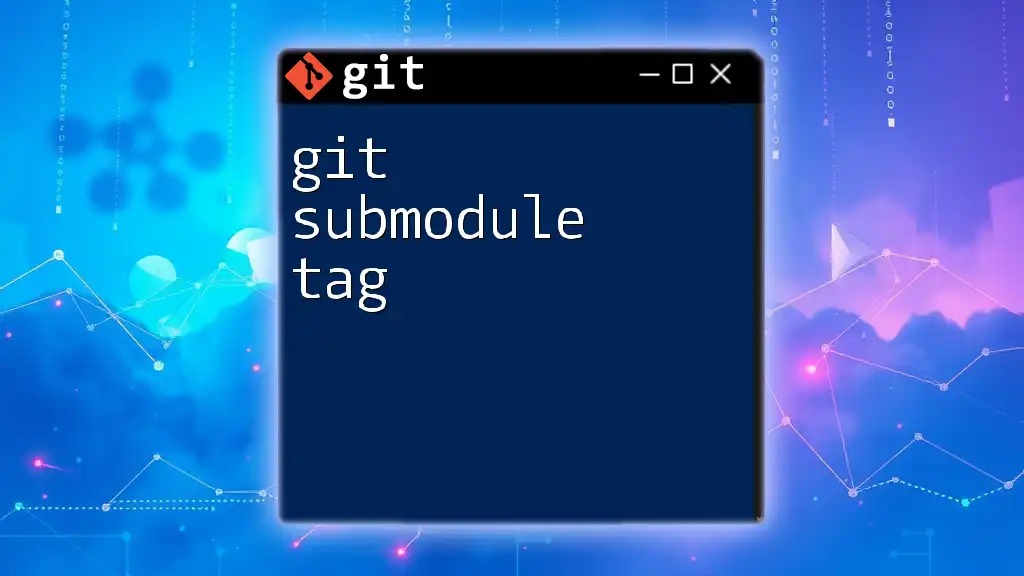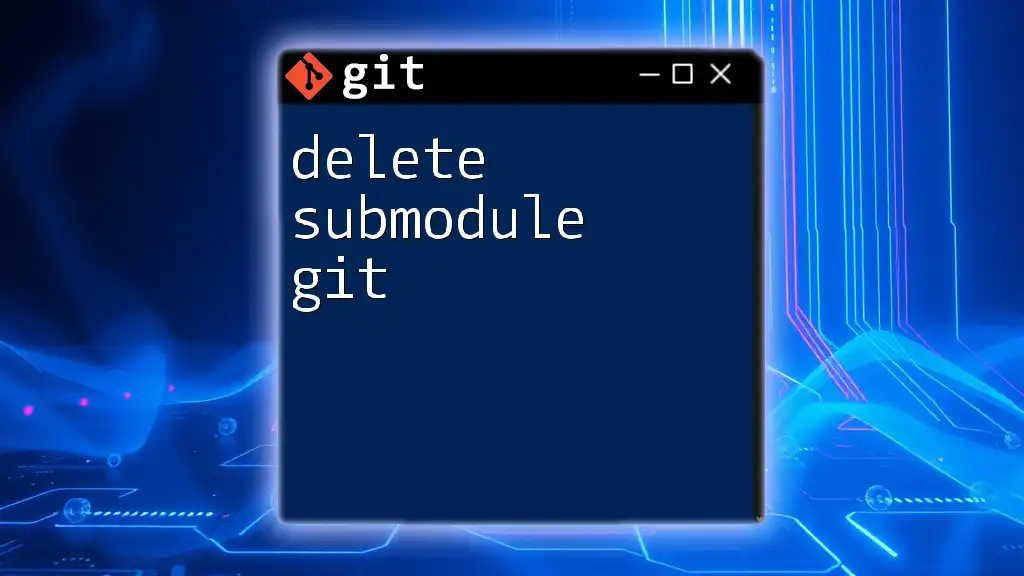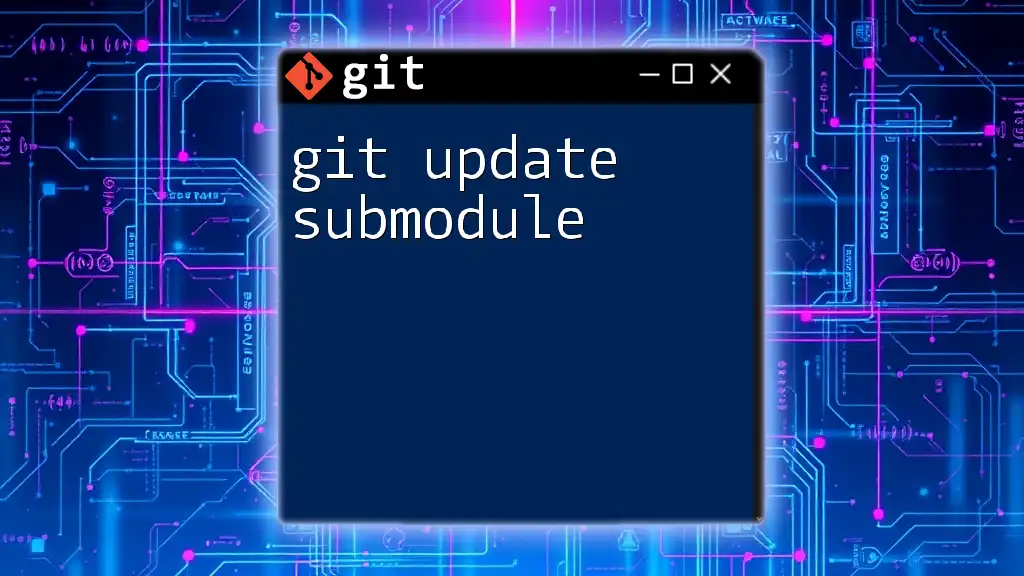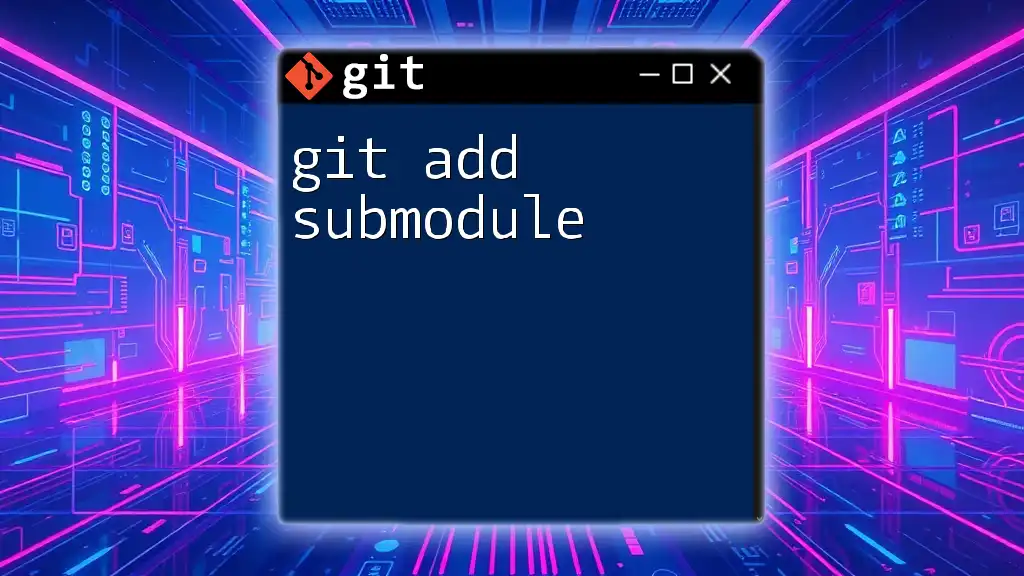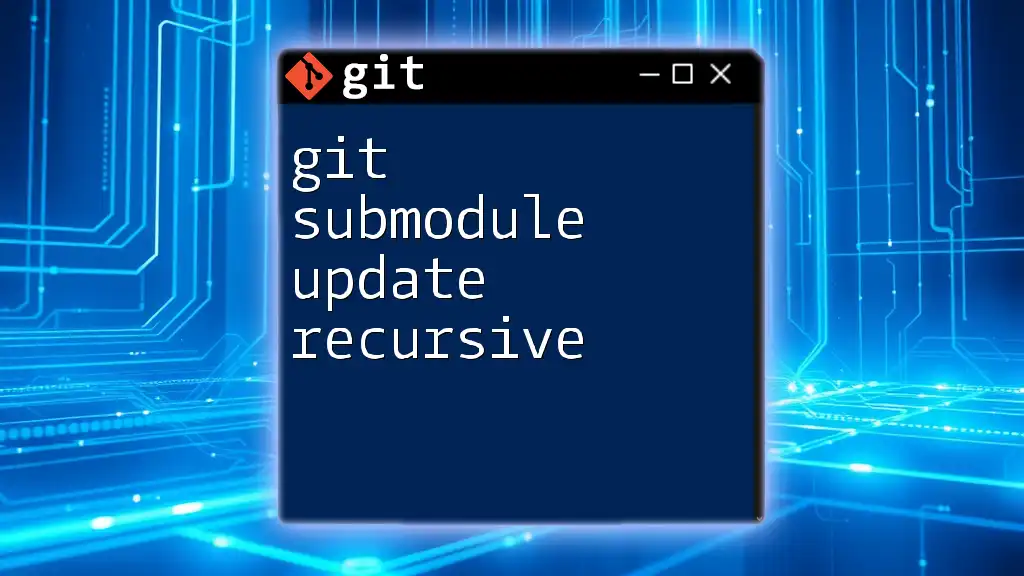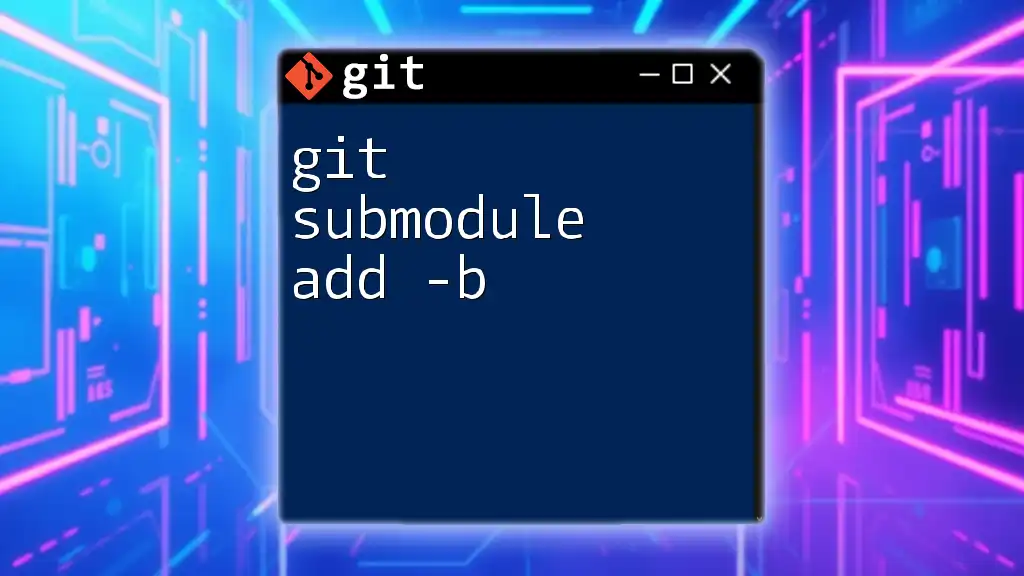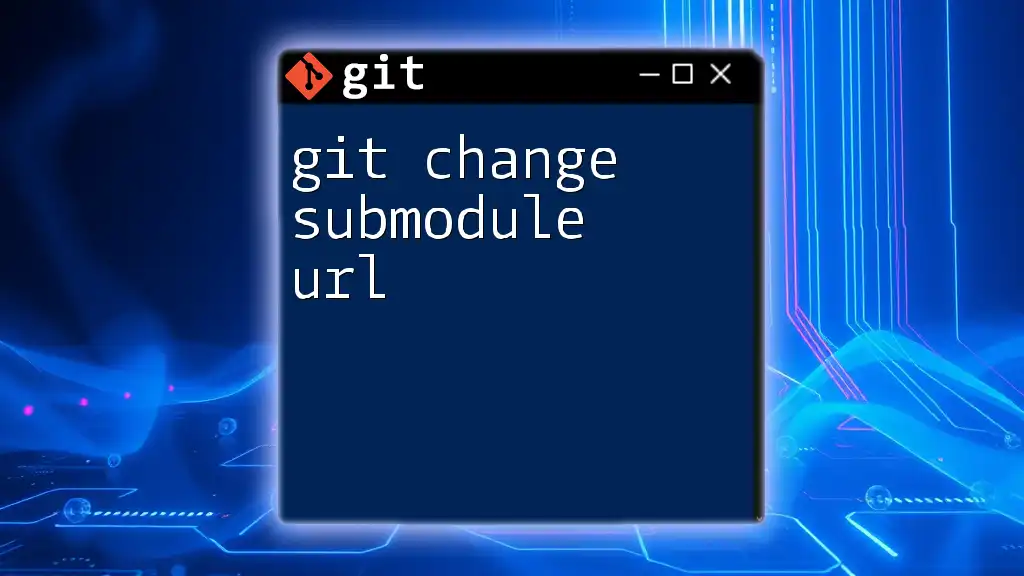To create a Git submodule, use the `git submodule add` command followed by the repository URL to include an external repository within your project.
git submodule add https://github.com/user/repo.git path/to/submodule
Understanding the Git Submodule Concept
What are Submodules Used For?
Git submodules are primarily used for managing external libraries, keeping projects modular, and facilitating collaboration across separate repositories. When a project depends on another repository, submodules allow you to include that repository as a subdirectory within your own without having to copy and paste the code. This is especially useful for shared libraries or frameworks that may be used in multiple projects.
Key Principles of Submodules
Submodules link repositories while allowing you to specify which commit you want to track. This leads to a clear separation of code, enabling you to update or even replace the submodule independently from the main project. Every time you clone the parent repository, the submodules will remain linked to the exact commit you specified, ensuring stability and consistency.
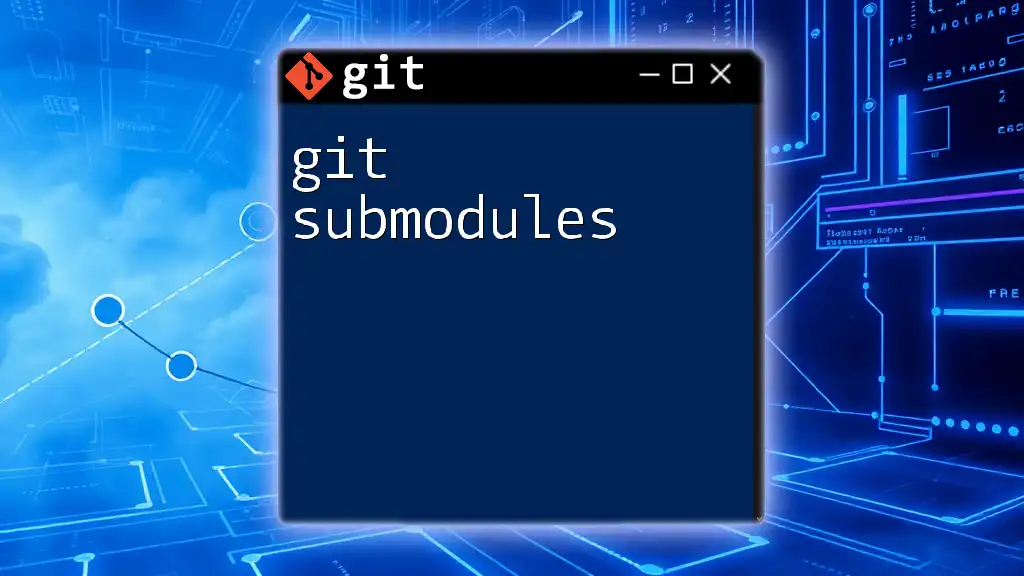
Setting Up a Git Submodule
Prerequisites
To create a Git submodule, you should have a basic understanding of Git commands and ensure you have Git installed on your machine. Familiarity with concepts like commits, branches, and repositories will make the process much smoother.
Step-by-Step Instructions
Initializing a New Repository
To get started, you need to create a parent repository. Use the following commands:
git init my-project
cd my-project
This sets up a new Git repository named `my-project` and navigates into that directory. Here, you can create your main project structure.
Adding a Submodule
To add a submodule, you'll need the URL of the external repository you want to include and the local path where the submodule will reside in your project. The command to add a submodule looks like this:
git submodule add <repository-url> <path>
For instance, if you are adding a library repository, it might look like this:
git submodule add https://github.com/example/library.git libs/library
This command does two things: it downloads the specified repository into your project directory under the path `libs/library`, and it registers this submodule in the parent repository’s configuration.
Cloning a Repository with Submodules
If you're cloning an existing project that contains submodules, you'll want to do so in a way that ensures the submodules are also cloned. Use the `--recurse-submodules` option:
git clone --recurse-submodules <repository-url>
Utilizing this option ensures that all the necessary submodules are pulled down alongside the main repository, retaining their links and the specific commits.
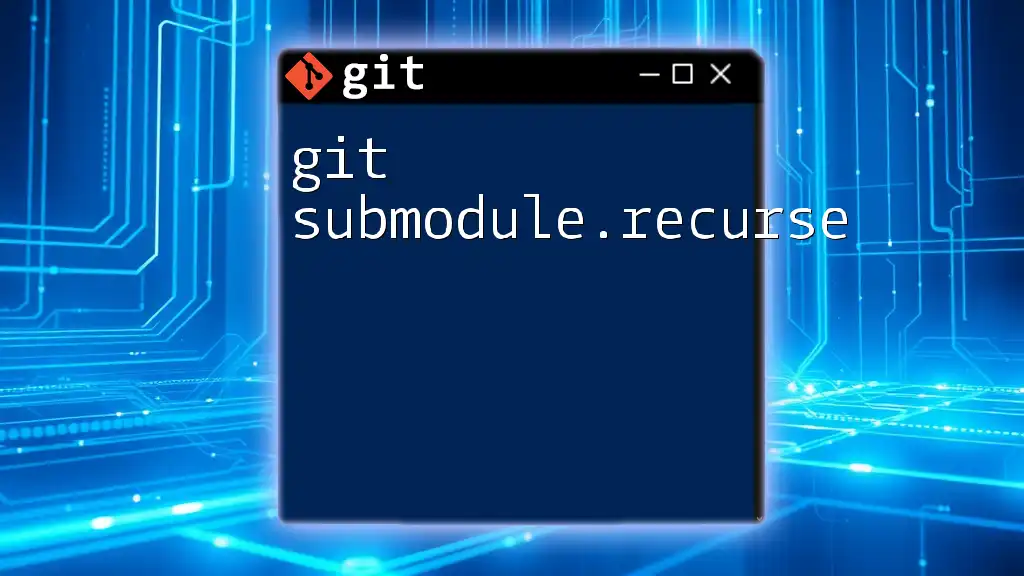
Common Submodule Commands
Updating Submodules
To keep your submodules updated with the latest changes from their respective upstream repositories, you can use the following command:
git submodule update --remote
This command fetches the latest commits for all submodules as specified in the `.gitmodules` file and updates the working directory to reflect these changes. It is crucial for ensuring that your project benefits from the most recent developments of its dependencies.
Removing a Submodule
If you ever need to remove a submodule, the process involves several steps:
-
Unlink the Submodule: To remove the submodule from the parent repository, run:
git rm --cached <path> -
Delete the Submodule Directory: After unlinking, you'll want to clean up the files:
rm -rf <path> -
Clean Up Configurations: Finally, you should update both the `.gitmodules` and your Git configuration by manually removing the relevant submodule entries to prevent confusion in the future.
Alternatives to Submodules
While submodules are a powerful feature in Git, they aren't the only option for managing dependencies. Git subtree is another method worth considering, which allows you to expand another repository into a subdirectory of your project.
For instance, using the subtree command looks like this:
git subtree add --prefix=libs/library https://github.com/example/library.git master --squash
This command adds the content of the specified repository directly into your directory structure, making it easier to work with, though at the cost of some of the isolation that submodules provide.
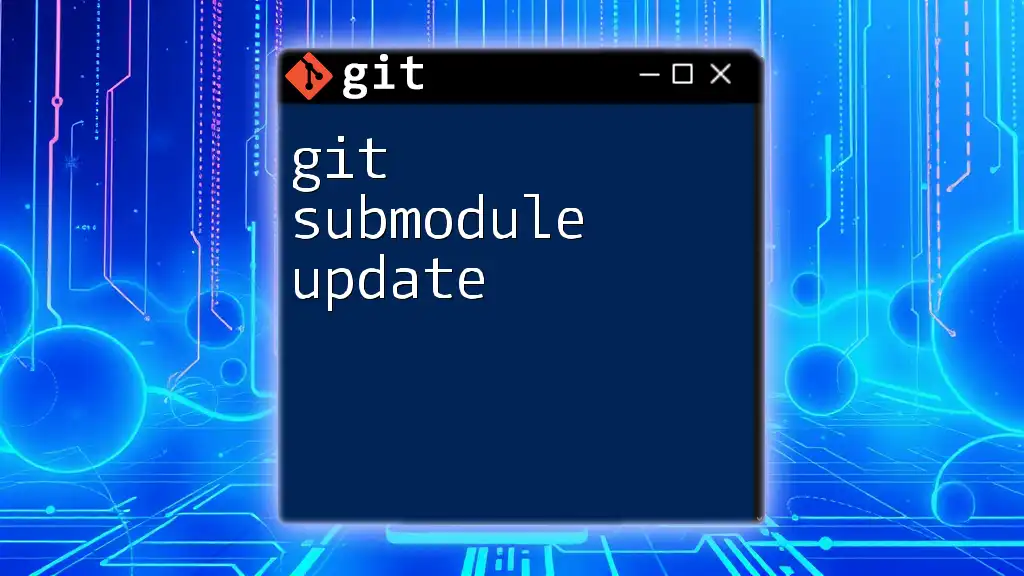
Best Practices for Using Submodules
Using submodules effectively requires a bit of strategy. When deciding whether to use submodules or alternative methods, consider the following:
-
When to Use Submodules vs. Alternative Methods: Use submodules if you need precise control over the version of an external dependency, and you want to maintain a clear separation between your code and the dependencies.
-
Documentation Practices: Always keep your README files and documentation up-to-date regarding the use of submodules. Clear instructions on how to clone and update the project can save you and your collaborators from headaches down the line.
-
Version Control Strategies: Clearly define which versions of submodules your project relies on. This clarity will help prevent conflicts and ensure that your project runs smoothly, regardless of the changes made to the submodule repositories.
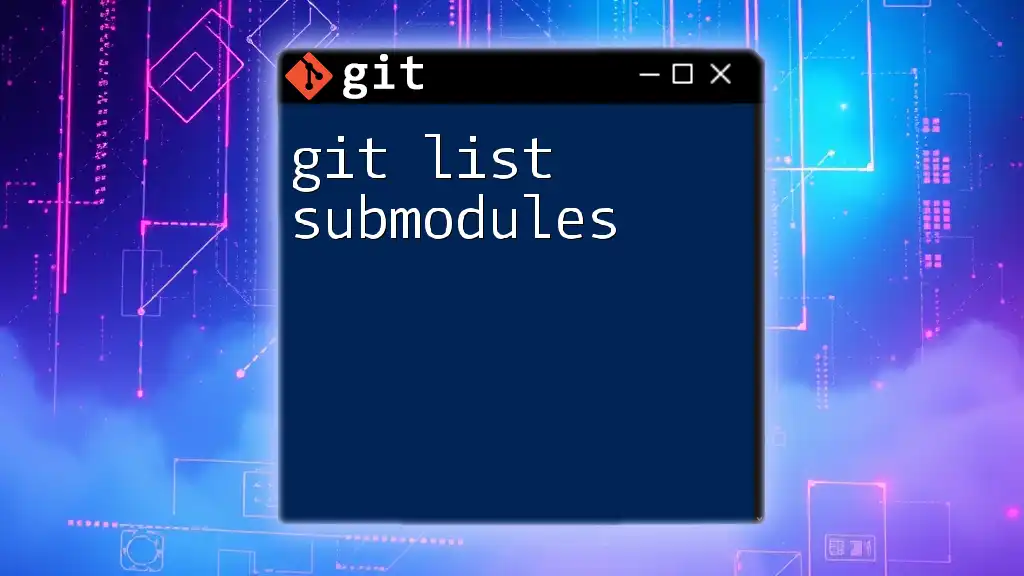
Troubleshooting Common Issues
Problem: Submodule Not Updating
If you find that your submodule is not updating as expected, you may encounter a common issue. Often, this can stem from the lack of newer commits in the submodule repository you are tracking. To resolve this, perform:
git submodule update --init --recursive
This command initializes the submodules and updates them to the latest commit tracked by the parent repository.
Problem: Cloning Issues with Submodules
Cloning issues can arise when submodule URLs are outdated or incorrect. To diagnose these failures, check the URLs specified in the `.gitmodules` file and ensure you have the correct access permissions. If everything appears correct but you still encounter difficulties, troubleshooting existing connections might be required.
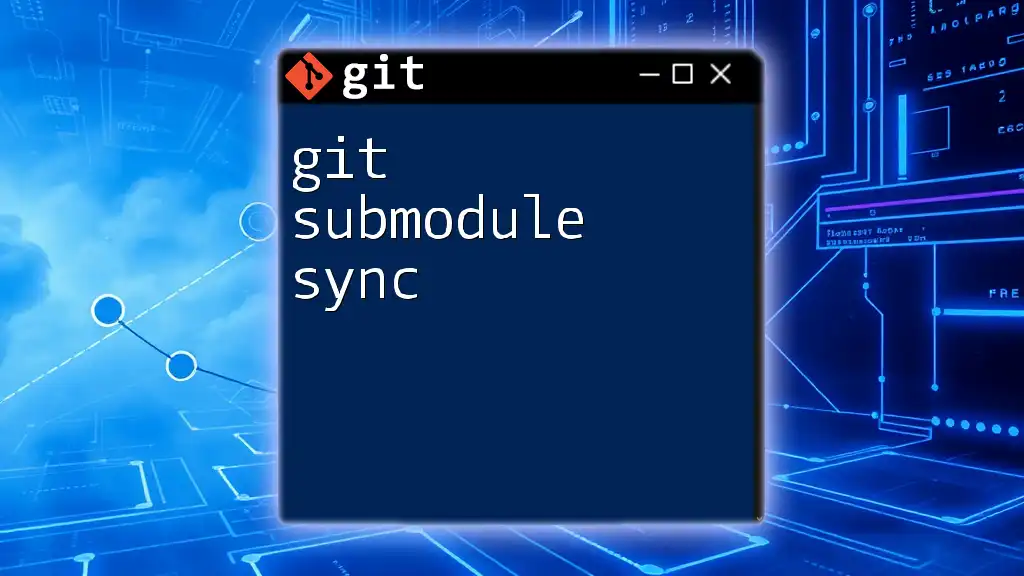
Conclusion
In summary, creating a Git submodule is a powerful technique for managing dependencies in your projects. By understanding how to add, update, and remove submodules alongside some best practices, you will be better equipped to tackle complex projects with multiple repositories.

Additional Resources
For further reading, consult the official Git documentation on submodules or explore some online tutorials and video guides. Engaging with the Git community on forums can also provide additional insights and solutions to unique challenges.
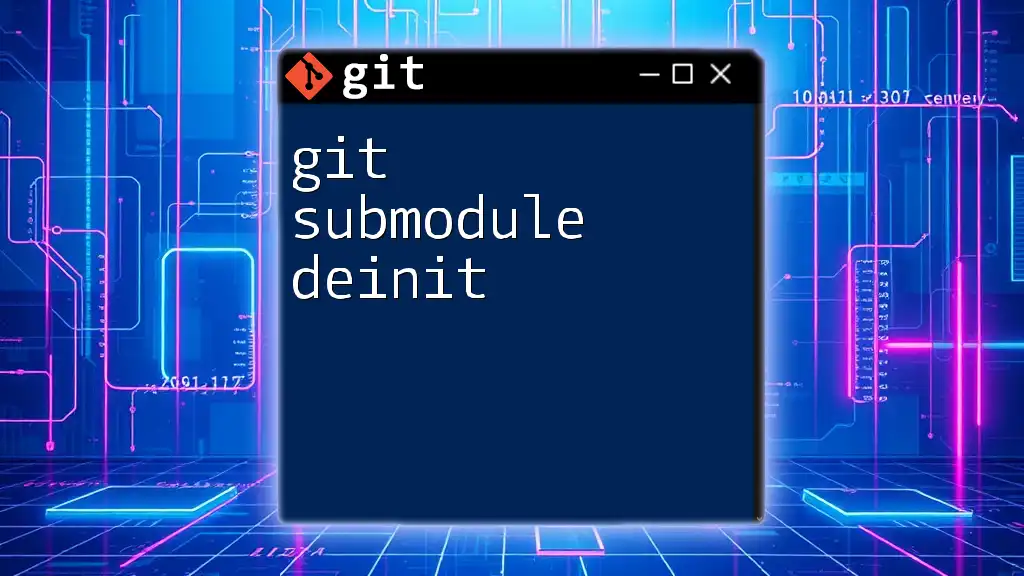
Call to Action
We invite you to share your own experiences with Git submodules in the comments. How have they helped your projects? Don’t forget to follow our blog for more content on mastering Git and its features!








